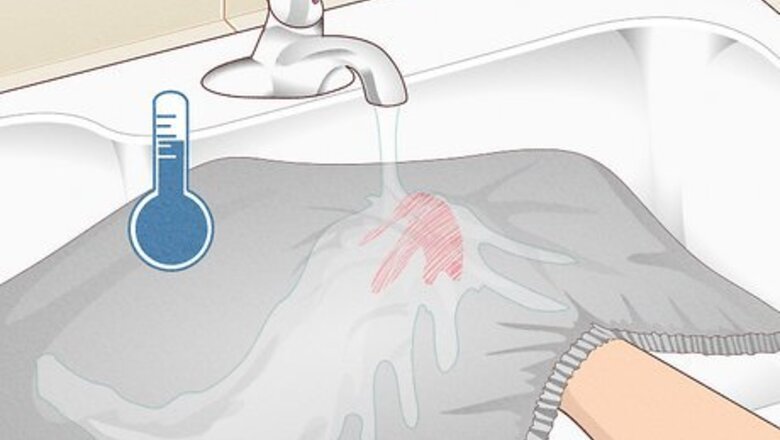
views
- Rinse fresh blood out of your sheets as soon as possible, then treat the area with hydrogen peroxide, ammonia, white vinegar, or a pre-laundry treatment (like stain remover).
- For dried blood stains, soak the sheets for a couple of hours in cold water, then pre-treat the area by dabbing on laundry detergent or hydrogen peroxide before washing.
- If you don’t have hydrogen peroxide or stain remover, you can make your own DIY stain removers with common household ingredients.
Removing Fresh Blood
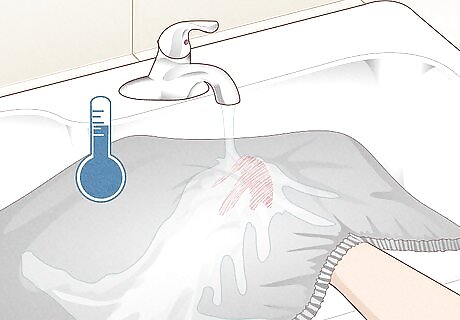
Rinse the stain out from behind using cold water as soon as possible. Take the bed sheet off the mattress first, then rinse the stain out using cold water. Do not use hot water, as this will set the stain. If flushing out the stain doesn’t work, soak your sheets in cold water to loosen the stain. You can add a bit of laundry detergent to the water to help the process along.
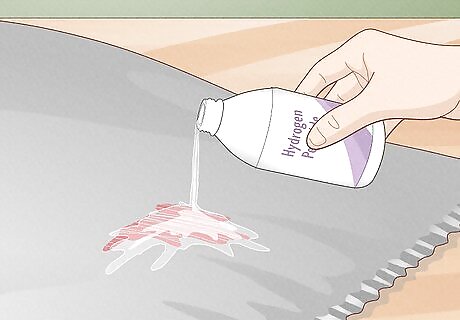
Treat stains with hydrogen peroxide, laundry detergent, or another stain removal product. Pour your stain remover of choice or hydrogen peroxide directly onto the blood stain to help get the stain out. Wait 20 to 25 minutes, then lightly pat the residue with a paper towel. If you don’t have hydrogen peroxide at home, here are a few alternatives: club soda white vinegar white bar soap a stain removal stick or an enzymatic cleaner Rinse thoroughly with water after using hydrogen peroxide, or it will bleach the fabric.
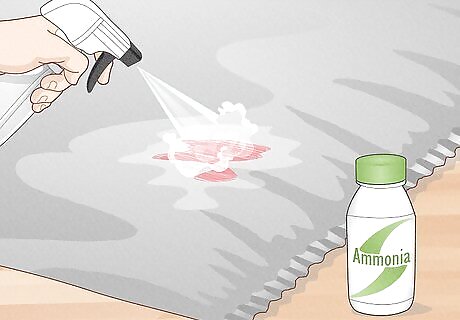
Use diluted ammonia for heavy stains. Fill a spray bottle with 1 tablespoon of ammonia and 1 cup (240 milliliters) of cold water. Close the bottle and shake it to mix. Spray the mixture onto the stain and wait 30 to 60 minutes. Blot up any residue with a clean cloth, then wash the sheets in cold water. Be careful with colored sheets. Ammonia may fade or bleach colored fabrics.

Launder your bed sheets in cold water after any stain-removal treatment. Use cold water, a mild detergent, and your usual wash cycle. Remove the wet sheets as soon as the cycle ends. Do not place them in the dryer. Instead, let them air dry either by hanging or in the sun. Treat the blood stains again if they do not come out after the first wash cycle. You will need to continue treating and washing until the blood is no longer visible. Once you get the blood out, you can dry the sheets as you normally would. Consider using bleach on white sheets.
Removing Dried Blood
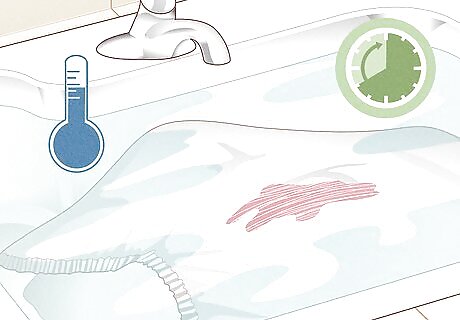
Take the bed sheet off, and soak the stain in cold water for several hours to overnight. The cold water soak will help loosen any dried blood. You can also wash the bed sheets in your washing machine. Use cold water and mild detergent. This will not necessarily remove the stain, but it will help loosen it. Follow this step with any of the stain-removal treatments listed below. Keep in mind that the stain may be permanent, especially if it has been through the dryer. Heat sets stains, so if you put your stained bed sheets into the dryer, the blood may have been baked into the fabric.
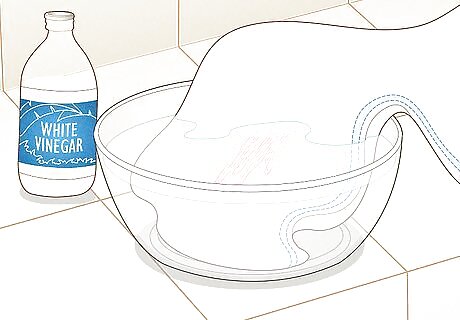
Try using white vinegar. For a small stain, fill a bowl with vinegar first, then soak the stain in the bowl. For a larger stain, place towel or rag under stain first, then pour vinegar over the stain. Wait 30 minutes (for both small and large stains), then wash the bed sheet as usual using cold water.
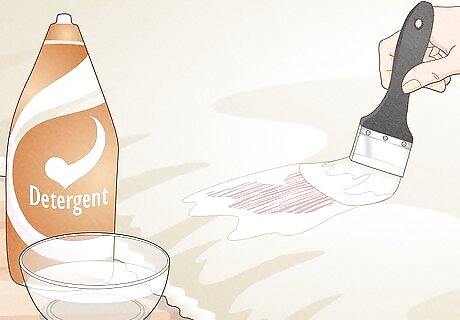
Use laundry detergent and water on light stains. In a small cup, combine 1 part laundry detergent and 5 parts water. Stir to mix, then apply the solution to the stain. Pat it in with a soft-bristled brush and wait 10 to 15 minutes. Blot the stain with a damp sponge or towel, then pat it dry with a white towel.
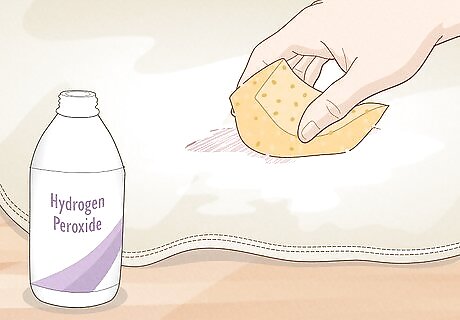
Use hydrogen peroxide on stubborn stains. Pour some hydrogen peroxide onto the stain, and pat it with wait a soft-bristled brush. Wait 5 to 10 minutes, then blot the stain with a damp sponge or rag. Pat the stain again with a clean, dry towel. Light turns hydrogen peroxide into water. If it is very bright in your room, cover stain with plastic wrap, then place a towel over it. Do a spot test on colored sheets first. Hydrogen peroxide may fade or bleach colored fabrics. Use full-strength ammonia as a last resort. Avoid it on colored bed sheets.
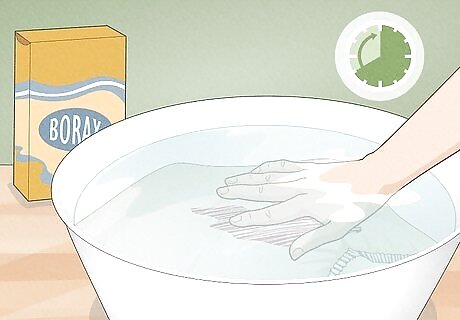
Soak extra stubborn stains in borax and water for several hours to overnight. Follow the instructions on the box of borax to create a soaking solution. Dunk the stain in the solution for several hours to overnight. Rinse it out the following day with water, then hang it up to dry.
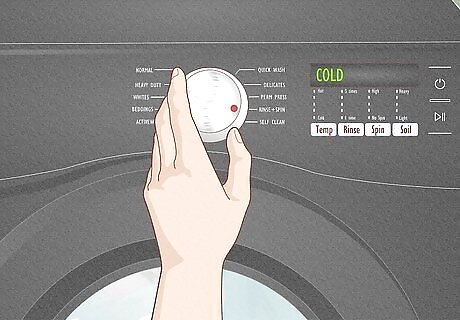
Wash your sheets in cold water to complete the process. Use your regular detergent and wash cycles. Then, air dry your sheets. Putting sheets in the dryer can cause the stain to set if it didn’t come out all the way. If the stain didn’t come completely out, repeat the treatment process.
Treating Stained Mattresses and Bedding
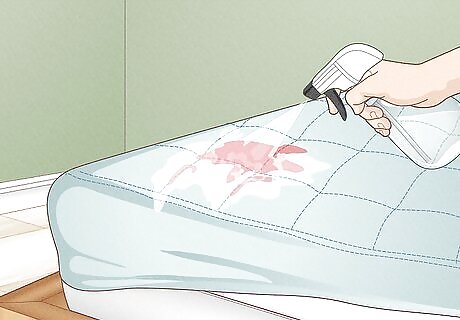
Dampen stains on mattress protectors first with cold water. If the stain is fresh, a bit of cold water may be all you need to get it out. If the stain has already dried, a good soaking (several hours to overnight) will help loosen the stain and make it easier to get out. If the stain is on a mattress, lightly spray the stain with a bit of water. Do not soak the stain.
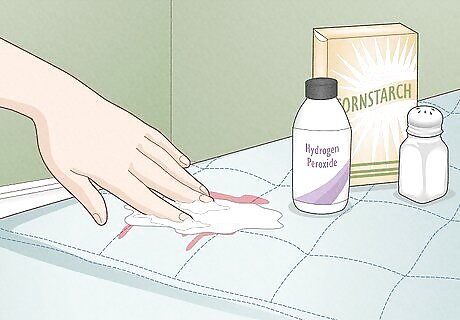
Try a paste made from cornstarch, hydrogen peroxide, and salt. Mix ½ cup (65 grams) of cornstarch, ¼ cup (60 milliliters) of hydrogen peroxide, and 1 tablespoon of salt. Spread the paste onto the stain, let it dry, then brush it off. Repeat the treatment if necessary.
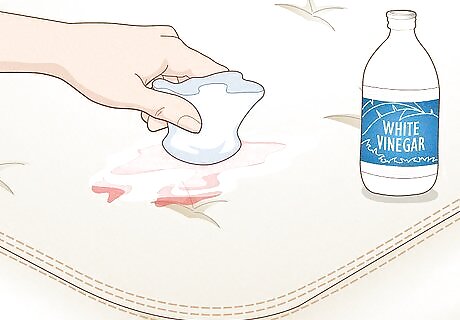
Blot stains on mattresses with white vinegar or hydrogen peroxide. Do not dump the white vinegar or hydrogen peroxide onto the stain. Instead, soak a clean cloth with the white vinegar/hydrogen peroxide first. Squeeze out any excess liquid, then gently dab the stain. If the cloth gets dirty from the blood, use a cleaner part of the cloth. This way, you won't be transferring the stain back onto the mattress.
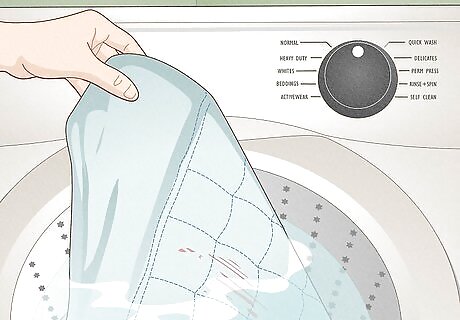
Use the same stain-removal treatments on comforters and mattress protectors as you would on a bed sheet. Once you have the stain off, load them into the washing machine separately, and wash using cold water and mild detergent. Use a double rinse cycle, if you can. Toss a tennis ball or dryer ball into the dryer along with your comforter to help fluff it up again.
DIY & Alternative Stain Removers
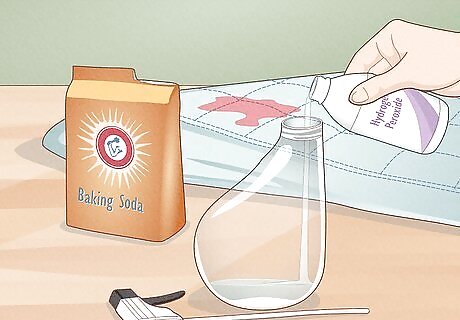
Make your own stain remover using baking soda, hydrogen peroxide, and water. Fill a spray bottle with 1 part baking soda, 1 part hydrogen peroxide, and ½ part cold water. Close the bottle, and shake it to mix. Spray the mixture onto the stain, wait 5 minutes, then rinse it off. Repeat 2 more times, then wash the sheets in cold water. This works best on polyester-cotton blends.

Consider using salt and dish soap as a pre-laundry treatment. Mix 2 tablespoons of salt and 1 tablespoon of dish soap. Dampen the stain with cold water first, then soak it with the soap mixture. Wait 15 to 30 minutes, then rinse the stain out using cold water. You can also use shampoo instead of dish soap.
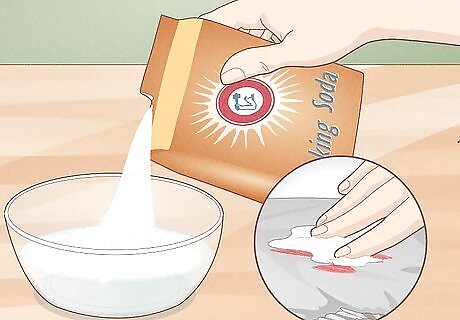
Make and use a baking soda paste. Mix one part baking soda with two parts water to form a paste. Dampen the stain with water, then rub the paste onto the stain. Let the fabric dry, ideally in the sun. Brush off any residue, and then wash in cold water. Talcum powder or cornstarch/cornflour will also work.
















Comments
0 comment